Guest post by TJ Pavlov, Teacher & Real-World Learning Program Coordinator a Chicago Tech Academy
We often hear how important it is to be a strong problem solver; the skill is almost always included in 21st Century Skills for students. One well-regarded framework for problem solving is “Design Thinking,” a methodical process that guides stakeholders through understanding, exploring and materializing solutions to their challenges or products.
Something we don’t focus much on, however, is what problem we are solving. We can solve all the problems we want but if we are not solving the right ones, our efforts can be wasted.
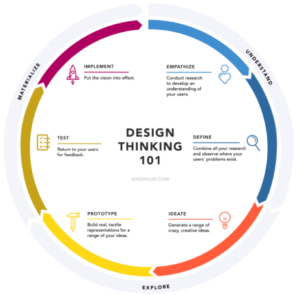
I coordinate all the Real-World Learning Programs at Chicago Tech Academy, a public contract high school in the Chicago Public School district that emphasizes technology and project-based learning. The bulk of this work consists of leading an internship program. Our 12th grade students spend an entire month outside of the classroom working with corporate, philanthropic, public-sector and entrepreneurial organizations. The goal is to give them experiences that connect them to professionals and expose them to work environments that can give them context for making post-secondary plans.
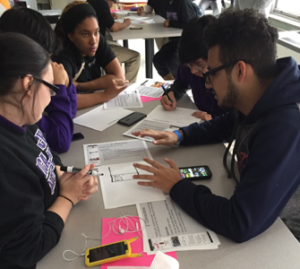
Students giving feedback to the developers of an internship matching app
I was fortunate to be invited to the Schools That Can – Education to Employment (e2e) Symposium at NYU in early November. I had, what I thought was, a pretty clear understanding of what my problem was. The question I posed was “How might we work with our internship partners to better ensure our students are prepared to fulfill their needs?”
Attendees of the e2e Symposium were grouped into teams to work through unique challenges that educators were facing. My team was a collection of talented individuals from the corporate world, students who were in the process of navigating career options, higher education representatives and other teachers/administrators. As one would guess, I anticipated this variety of perspectives would help immensely. Not only did it help, it was critical.
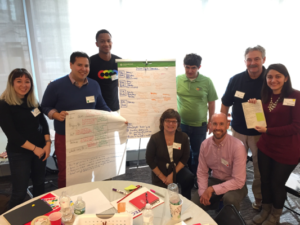
e2e leaders help TJ define and solve his challenge for Chi Tech Academy
We began by empathizing. I presented my challenge and some data to the team for them to better understand my problem. From there we moved into clarifying with probing questions for them to get to know the climate I was working in, who our students were and what our partners expected from the program.
Armed with this new insight, we moved to re-defining what my challenge really was. This is where my aha moment unwrapped itself. We spent some quality time challenging each other’s thinking and made a breakthrough. I did not have one single challenge that needed a solution, like my mind had settled on….I had two! (And perhaps even a third, but time did not permit us to address it.)
The Design Thinking Guide helped us with language to clearly express our (we all owned it now, it was not just mine) problem statements. We agreed on the following:
- #1| I am a ChiTech staff member trying to build our partners’ capacity to have a successful month with students, but I lack time and resources and the ability to develop enough strong relationships and prepare the sites because time is limited and not all sites are used to working with HS students, which results in discouragement from internship sites and weaker relationships or preparation for some sites.
- #2| I am a ChiTech 12th grader trying to navigate and adapt to a new environment, but I have little understanding or familiarity with the workplace setting and expectations because I am from an isolated environment where I wasn’t exposed to these types of workplaces, which results in me developing a negative perception and/or being discouraged, which sometimes leads to me giving up.
These statements have been a foundation of my work ever since. Clearly Identifying the problems at hand was the single most impactful component of the design thinking process for me. Had we not spent the time crafting these statements, my work would have been misguided and any time or energy put into a solution might not be effective.
All professionals, especially educators ought to use this process to really understand what problem they are trying to solve. I cannot think of a challenge in today’s workplaces that cannot be adequately understood and addressed using design thinking. When I would tell people that I’m trying to solve the problem of preparing our students for internships, they would react supportively but the conversation would not gain much traction. Now, when I use these problem statements, dialogue flows easier because the listener can contextualize the issue.
The rest of the time at the e2e Symposium was spent building prototype solutions to address these problem statements. Our team of bright thinkers from across professional continuum drafted two very valuable courses of action for me to take back to Chicago.
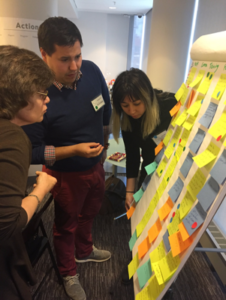
The solution to our the first problem statement was a quick and engaging video series for our partners that helps guide them through the internship month. Here we can provide them with activities and questions to pose to the students while on internship.
Our solution for the second problem statement was to build out a career exploration curriculum that we will implement in grades 9 through 12. Students will Explore, Investigate, Prepare and Execute career related activities to ensure their internships are successful, and more importantly, to feel inspired about their plans for life after high school.
Both of these solutions are the basis of work for our newly created Real-World Learning Action Group at ChiTech. This action group is made up of me and one representative from each grade level who will be the leaders of this work amongst their respective teaching teams. We are testing and and implementing these prototypes while keeping anchored in the problem statements that guide our work.
I am very optimistic and excited to continue the work that my e2e team helped craft. Bringing together engaged minds from a variety of professional situations is an incredibly effective way find out what the problem that needs attention actually is……and then work to solve it!
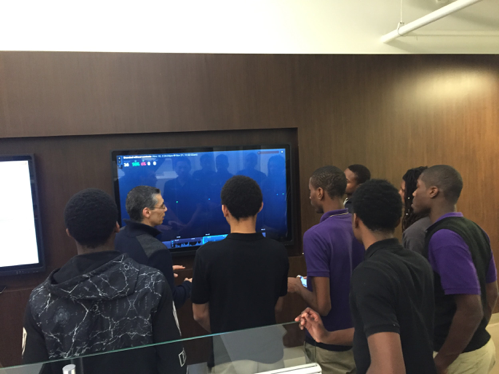
Students out in the field learning how airplanes get internet!

